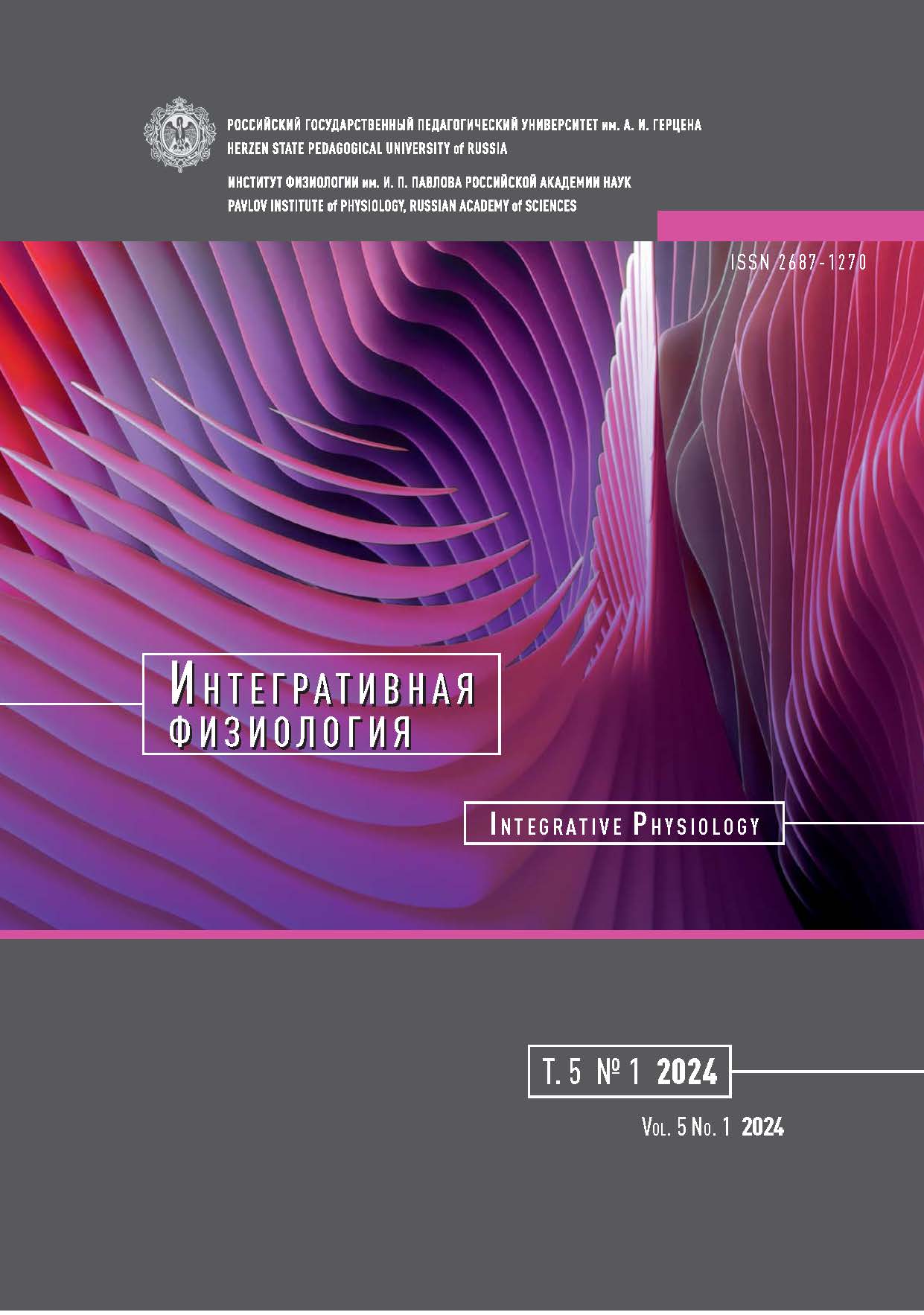To mark the 95th anniversary of Vladimir M. Pokrovsky, the promoter of the leading role of the brain level in the hierarchy of cardiac rhythmogenesis in the whole organism
DOI:
https://doi.org/10.33910/2687-1270-2024-5-1-6-11Keywords:
work and scientific achievements of V. M. Pokrovsky, heart rhythm development in the human and animal body, cardiorespiratory synchrony, preautomatic pause, weak sinus node syndromeAbstract
On November 3, 2023, Vladimir M. Pokrovsky — professor at the Department of Normal Physiology, Kuban State Medical University, honored scientist of Russia, Doctor of Medical Sciences and head of the Department from 1973 to 2021 — turned 95 years old. The researcher showed that cardiac rhythm in the whole organism is formed by a hierarchical system comprising the brain and intracardiac levels. His talent is exemplified by the original approaches and methods used to study the system of cardiac rhythmogenesis. The volley stimulation of efferent structures of the vagus nerves proposed by Pokrovsky was an experimental model well suited for studying nervous effects on the heart in the body. Stimulation of the sympathetic cardiac nerves revealed their modulating effect on the synchronization of vagal and cardiac rhythms. The method proposed to obtain cardio-respiratory synchrony in all people who are able to control their breathing in time with the beat of the stimulator at a certain frequency shows that efferent nuclei of the vagus nerves in the medulla oblongata form signals that come to the sinoatrial node, and the heart begins to contract with the frequency of these signals. The central generator provides adaptive responses of the heart under natural conditions by suppressing the intracardiac generator, which supports the pumping function of the heart when the central nervous system is in a state of deep inhibition. The experiment obtained a short-term cardiac arrest, or a preautomatic pause, in dogs with a bilateral one-time blockade of vagus nerve excitation. The transition from central rhythm guidance to the automation of the sinoatrial node was accompanied by a decrease in the heart rate, which indicated the gradient of automation principle. Simulation of a reduced dominance of the central level of rhythmogenesis in dogs showed an increase in electrocardiographic manifestations of the sinus node weakness syndrome and a decrease in the cross-section of the focus of initial excitation in the sinoatrial region of the heart.
References
ЛИТЕРАТУРА
Ноздрачев, А. Д. (2008) Впечатления от книги В. М. Покровского «Формирование ритма сердца в организме человека и животных». Успехи физиологических наук, т. 39, № 3, с. 89–90.
Покровский, В. М. (2007) Формирование ритма сердца в организме человека и животных. Краснодар: Кубань-книга, 143 с.
Покровский, В. М. (2010) Сердечно-дыхательный синхронизм в оценке регуляторно-адаптивных возможностей организма. Краснодар: Кубань-книга, 244 с.
REFERENCES
Nozdrachev, A. D. (2008) Vpechatleniya ot knigi V. M. Pokrovskogo “Formirovanie ritma serdtsaa v organizme cheloveka i zhivotnykh”. [Impressions of the book by V. M. Pokrovsky “Heart rhythm formation in the human and animal organism”]. Uspekhi fiziologicheskikh nauk, vol. 39, no. 3, pp. 89–90. (In Russian)
Pokrovskij, V. M. (2007) Formirovanie ritma serdtsa v organizme cheloveka i zhivotnykh [Heart rhythm formation in the human and animal organism]. Krasnodar: Kuban-Kniga Publ., 143 p. (In Russian)
Pokrovskij, V. M. (2010) Serdechno-dykhatel’nyj sinkhronizm v otsenke regulyatorno-adaptivnykh vozmozhnostej organizma [Cardiorespiratory synchronism used for estimation of regulatory-adaptive possibilities of organism]. Krasnodar: Kuban-Kniga Publ., 244 p. (In Russian)
Downloads
Published
Issue
Section
License
Copyright (c) 2024 Irina L. Cherednik, Yulia V. Kashina, Svetlana V. Polishchuk, Alexander N. Ardelyan

This work is licensed under a Creative Commons Attribution-NonCommercial 4.0 International License.
The work is provided under the terms of the Public Offer and of Creative Commons public license Creative Commons Attribution 4.0 International (CC BY 4.0).
This license permits an unlimited number of users to copy and redistribute the material in any medium or format, and to remix, transform, and build upon the material for any purpose, including commercial use.
This license retains copyright for the authors but allows others to freely distribute, use, and adapt the work, on the mandatory condition that appropriate credit is given. Users must provide a correct link to the original publication in our journal, cite the authors' names, and indicate if any changes were made.
Copyright remains with the authors. The CC BY 4.0 license does not transfer rights to third parties but rather grants users prior permission for use, provided the attribution condition is met. Any use of the work will be governed by the terms of this license.







